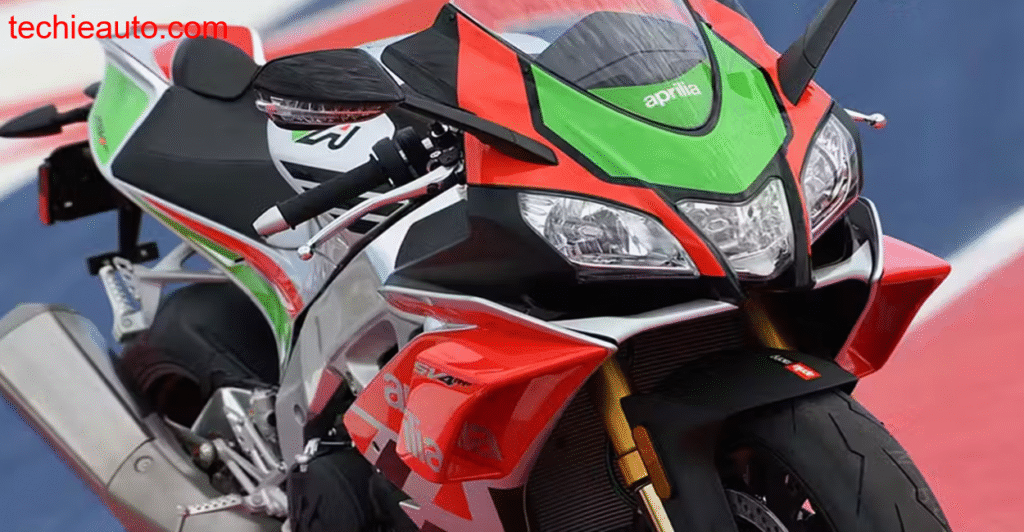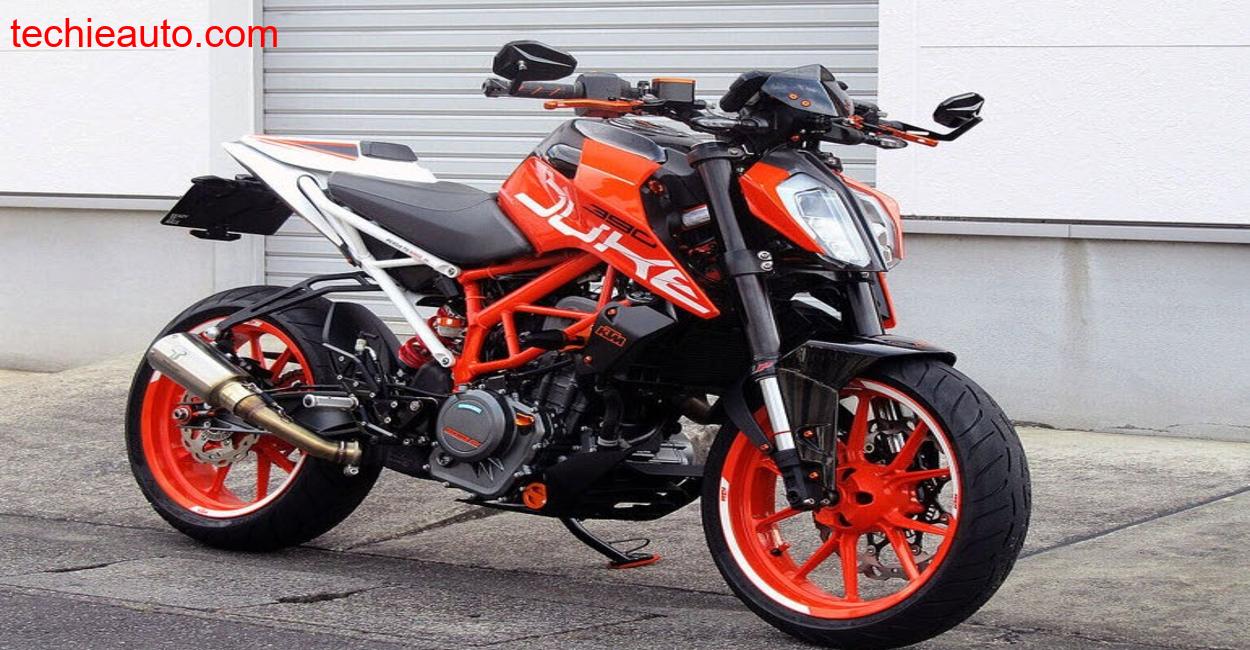History of the RSV4
The RSV4’s origin story reads like a race engineer’s fever dream. Born in 2009 under the meticulous guidance of Luigi Dall’Igna, Aprilia’s RSV4 emerged with one clear objective: kill the competition. The chassis was tighter than a 600cc, while the engine, a snarling 65° V4,was engineered for the track from the ground up. Its first full year in SBK? It won the championship. By 2015, Aprilia wasn’t resting. The RSV4 RF was born, boasting 201 horsepower and 115 Nm of torque in a package weighing just over 200 kg. A bike so unapologetically aggressive that it laughs in the face of anything less than racetrack-level abuse. To keep up with Ducati’s Panigale, BMW’s S1000RR, and Yamaha’s R1, Aprilia injected Ohlins suspension, forged wheels, and their war-tested electronics suite, dubbing it a rider’s scalpel.
The RSV4’s Technology

There’s a reason Aprilia didn’t just slap an “RR” badge on this machine, the “F” in RF stands for “Factory,” and it truly lives up to the name. This bike is built for serious performance, starting with its reworked V4 engine that now delivers even more power and torque. It’s supported by top-tier Ohlins Racing suspension at both ends and ultra-light forged aluminum wheels that cut down unsprung weight for sharper handling. The braking system features Bosch’s 9MP Race ABS with rear-lift mitigation for precise control under hard braking. Aprilia’s Performance Ride Control suite, known as aPRC, brings a full arsenal of rider aids: ATC (traction control), AWC (wheelie control), ALC (launch control), and AQS (quick shift). You even get the V4-MP smartphone interface, which lets you fine-tune traction and wheelie control section-by-section on pre-mapped tracks. But it all comes down to that glorious V4 engine. Aprilia has gone deep, redesigning the airbox for a frontal ram-air intake, reducing internal friction, upping the compression, lightening the internals, and reworking the exhaust for a throatier, angrier note. The result? A surge of power that’s not just wild, but precise, predictable, and endlessly thrilling.
Trackdata Initiated: Turn One, Gata Loops
My mechanic in Sarchu, Rana from Keylong, was more used to tuning Enfields than Aprilias. But he was game. First thing he did was jack up the rear preload after seeing me straddle the RSV4 in my Dainese one-piece. “Sir, race mode hai ye. Pahadon mein toh kamzor aadmi hil jayega,” he said, smirking. I smirked back. Start button. A moment’s whir. Then thunder, contained, rich, metallic. I rolled the RSV4 forward on that old tarmac ribbon stretching toward Gata Loops. Immediate impressions? Sportbike geometry on steroids. High pegs, low bars, tight cockpit. But it felt like an extension of me. Every input, clutch, brake, throttle, was razor-sharp. The first few kilometers were exploratory. At 14,000 feet, the air is thin, but the Aprilia’s ECU adjusted seamlessly. I could feel the front wheel dancing light every time I cracked open second gear out of tight bends. Rear end jittered on heavy braking. The stock suspension setup was too stiff for this chipped Himalayan asphalt. Still, the V4’s feedback was superb. Not just power, but sensation, through the bars, the seat, even the footpegs. That first ride was about trust. And by the time we reached the fourth hairpin, I was already addicted.
Telemetry Dreams in Thin Air
Adjustment time. Back at camp, we popped the preload down half a turn and softened compression damping. I added two psi less to the rear Pirelli Supercorsa. Instant change. Heading back out, I used the V4-MP smartphone app to log G-forces and lean angle. It was surreal, watching a red flash mid-corner as the app told me I was off pace. One more run through those climbs and I started pushing braking points deeper. I could now feather the throttle with better modulation, watching the AWC kick in subtly when the front began to rise out of hairpins. The altitude meant the RSV4 RF wasn’t at full oxygen-fed potential, but the torque curve remained deliciously flat. Not once did it cough or sputter. Even with the altitude-induced 10–15% power drop, it delivered precise, repeatable laps, or in our case, switchback loops.
Braking Points and Belief
Lap three, well, let’s call it Loop Three, was about confidence. I started trail braking deeper, letting the Race ABS kiss the front disc at the limit. What impressed me most was how stable the RSV4 remained when braking from 150 to 60 in seconds over uneven surface. The engine braking worked magic, adjusting based on rpm and gear. On one memorable run, I dropped two gears approaching a switchback, leaned in hard, and trusted the Brembos. No drama. No tail wag. Just surgical deceleration and precise turn-in. I could feel the chassis flex under me, alive but composed. The V4 made every throttle input feel like a choice, not a gamble. At 9,000 rpm, the midrange roar was thick, meaty. Above 12,000, it sang, sharp, harmonic, spine-tingling.
When the Machine Starts to Listen
Now came the deep dive into electronics. I set ATC to 3, AWC to 2, and let the electronics “learn” the trail over a few runs. Every lap, it felt like the bike understood me more. It adjusted the power output mid-corner, subtly correcting my ham-fisted throttle in the hairpins and letting me rocket out of corners with confidence. Race ABS was the unsung hero here. On gravel-patched corners, it knew exactly when to back off. I was amazed at how much I could trust the front brake without feeling like the tire would let go. But not everything was perfect. The quickshifter was up-only. Downshifts still required the clutch, and while the slipper clutch helped, I missed the seamlessness modern bi-directionals offer. Still, it was minor in the grand scheme of riding nirvana.
Man, Machine, and the Mountain
Evening approached, golden light slicing through the Sarchu valley. I fitted new Supercorsas, dialed in the preload by another quarter turn, and set off for three all-out loops. The RSV4 RF was now one with the terrain. Controlled stoppies into downhill curves. Full lean angles on rock-lined shoulders. The Ohlins suspension gobbled up imperfections while keeping the rear planted during throttle exit. And in the high-speed sections where the wind howled across the valley, I tucked in, low behind the tiny fairing, hugging the tank. At full tilt, I could feel minor instability, a tradeoff for that compact 600cc frame size. But I never felt unsafe. It was thrilling.
Trackdate from Brain

Every time I parked the RSV4 RF outside the tent, I’d sit next to it and play back the day’s runs in my head. The RSV4 RF is not just a superbike, it’s an ecosystem of engineering, data, feel, and instinct. Its sound was like a war drum echoing across the canyons. Not high-pitched like the S1000RR, not deafening like the Panigale. Just a throaty, polished V4 timbre that reminds you, this bike has pedigree. It’s serious. Even in Sarchu, at air-starved altitudes, on imperfect roads, it delivered a racetrack experience. If I could download the trackdate from my brain, it’d show a steep curve, of learning, tuning, and riding joy. And maybe one or two wheelies I’m not ashamed of.
Technical Specification
For correct and reliable info, we pull technical details directly from Aprilia’s website.
| Feature | Specification |
| Engine | 999.6cc, 65° V4 |
| Power | 201 hp @ 13,000 rpm |
| Torque | 115 Nm @ 10,500 rpm |
| Transmission | 6-speed, Aprilia Quick Shift (up only) |
| Electronics | aPRC (ATC, AWC, ALC, AQS), Ride-by-Wire, ABS |
| Suspension (Front) | Ohlins NIX Forks, fully adjustable |
| Suspension (Rear) | Ohlins TTX Shock, fully adjustable |
| Brakes (Front) | Dual 320mm discs, Brembo Monobloc, Bosch 9MP ABS |
| Brakes (Rear) | 220mm disc, Brembo with ABS |
| Frame | Aluminum dual beam |
| Dry Weight | Approx. 180 kg |
| Fuel Tank Capacity | 18.5 liters |
| Wheelbase | 1,420 mm |
| Seat Height | 845 mm |
| Tires | Pirelli Diablo Supercorsa SP |
Conclusion
The Aprilia RSV4 RF isn’t a motorcycle. It’s a mechanical instrument tuned for symphonies of speed. Yes, it demands attention and skill. Yes, it’s harsh and unforgiving at times. But get it right, and it rewards with a feeling no number or spec sheet can quantify. Riding it in Sarchu wasn’t conventional. It wasn’t meant to be. But this environment, pure, raw, and real, let the RSV4 RF stretch its carbon limbs in a way few racetracks ever could.
Can the Aprilia RSV4 handle daily road use?
It can, but it’s not ideal. The riding position and stiff setup are built for track or aggressive canyon rides.
How does Aprilia RSV4 compare to the Panigale or S1000RR?
It’s more involving. Less electronic polish than BMW, less brute torque than Ducati. But it communicates better.
Is the smartphone integration just a gimmick in Aprilia RSV4?
Surprisingly no. The V4-MP app allows serious riders to dial in performance and study telemetry with impressive accuracy.







